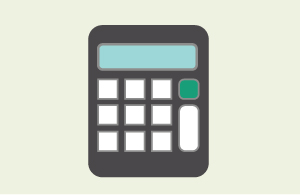Note 11: Intangible assets
Accounting policy
Software acquisition and development
Acquired computer software licenses are capitalised on the basis of the costs incurred to acquire and bring to use the specific software.
Costs that are directly associated with the development of software for internal use by the Office are recognised as an intangible asset. Direct costs include the software development and employee costs.
Staff training costs are recognised as an expense when incurred.
Costs associated with maintaining computer software are recognised as an expense when incurred, as are costs associated with hosted software or "as a service" arrangements.
Costs associated with development and maintenance of the Office's website are recognised as an expense when incurred.
Amortisation
The carrying value of an intangible asset with a finite life is amortised on a straight-line basis over its useful life. Amortisation begins when the asset is available for use and ceases at the date that the asset is derecognised.
The amortisation charge for each year is recognised in the surplus or deficit.
The useful life and associated amortisation rate of intangible assets have been estimated at between 2.5 and 5 years (20%-40%).
Impairment
Intangible assets subsequently measured at cost that have an indefinite useful life, or are not yet available for use, are not subject to amortisation and are tested annually for impairment. For further details, see the policy for impairment of property, plant, and equipment in Note 10. The same approach applies to the impairment of intangible assets.
Critical accounting estimates and assumptions
Determining the amortisation rates for intangible assets requires judgement as to the likely period of use of the assets. Different assessments of useful lives would result in different values being determined for amortisation costs, accumulated amortisation, and net book values.
Breakdown of intangible assets and further information
There are no restrictions over the title of the Office's intangible assets. No intangible assets are pledged as security for liabilities.
Movements for each class of intangible asset are as follows:
| Acquired software $000 |
Internally generated software $000 |
Total $000 |
|
|---|---|---|---|
| Cost | |||
| Balance at 1 July 2022 | 4,293 | 1,372 | 5,665 |
| Additions | - | 1,161 | 1,161 |
| Disposals | - | - | - |
| Reclassification | 3 | (3) | - |
| Balance at 30 June 2023 | 4,296 | 2,530 | 6,826 |
| Additions | - | 1,743 | 1,743 |
| Disposals | - | - | - |
| Balance at 30 June 2024 | 4,296 | 4,273 | 8,569 |
| Accumulated amortisation and impairment losses | |||
| Balance at 1 July 2022 | 4,234 | 709 | 4,943 |
| Amortisation expense | 28 | 203 | 231 |
| Elimination on disposal | - | - | - |
| Balance at 30 June 2023 | 4,262 | 912 | 5,174 |
| Amortisation expense | 27 | 305 | 332 |
| Elimination on disposal | - | - | - |
| Balance at 30 June 2024 | 4,289 | 1,217 | 5,506 |
| Carrying amounts | |||
| Balance at 1 July 2022 | 59 | 661 | 720 |
| Balance at 30 June 2023 | 34 | 1,618 | 1,652 |
| Balance at 30 June 2024 | 7 | 3,056 | 3,063 |

